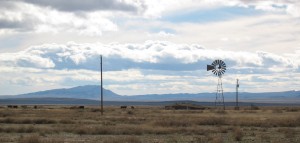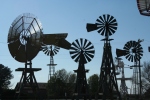In this great carnivorous land of ours, there are steak houses, and then there’s the Hilltop Steakhouse and Butcher Shop north of Boston in Saugus, Massachusetts.
The place is a brilliant anachronism, a throwback to traditional Western steakhouses, smack dab in the middle of New England. It’s got dark wood, cowboy boots and hitching posts (though no horses). Hell, there are even a bunch of plump cows out front (but they’re plastic; this is a minor detail).

It's a restaurant. And a metaphor.
The joint also is a living tribute to butcher-hood. You name the cut, you can get it there. Brisket. Porterhouse. Rump Roast. Don’t know what part of the cow your meat comes from? No worries—every placemat in the restaurant has a diagram to fill you in.
(Interesting fact from the placemat: A 1,000-pound steer yields 465 pounds of retail cuts.)
A friend and Boston-area native introduced me to this meat-loving Mecca about 15 years ago. Since then, every time I’m back in Beantown, I make a special trip.
As much as I love exploring new places in our country, there’s something nice about returning to the old ones again and again.
The experiences are like seeing an old friend—comfortable, calming and completely predictable. It’s the opposite of the “box of chocolates” line from Forrest Gump; you always know exactly what you’re going to get.
Especially when I travel alone, these bursts of familiarity energize me. The rituals are like reconnecting with an old friend, touchstones to provide perspective on the past. Sometimes, whatever the “Hilltop” might be, the same old same old makes the new experiences even richer, and, by contrast, harder to forget.
With all of this in mind, I returned to the Boston area for a wedding this past weekend. Wedding festivities began on Friday, but I flew in on Thursday for my Hilltop ritual.
Save for the disappearance of the Hilltop Brew, very little had changed since my last visit. The rooms were still named after famous Western cities. The steak tips (my regular order) still came with the option of onions and peppers. The servers—all Red Sox fans, of course—still ribbed me for wearing the Yankees cap.
In all, the meal was just like old times. I wouldn’t have it any other way.

















